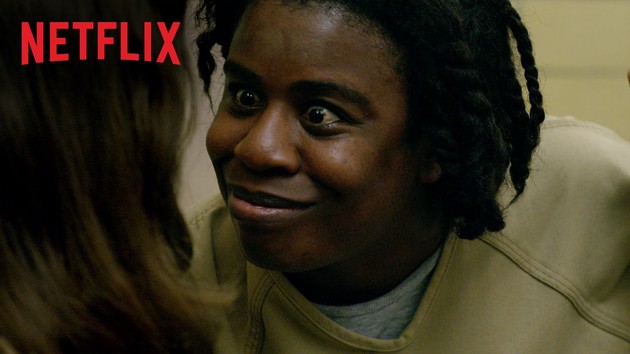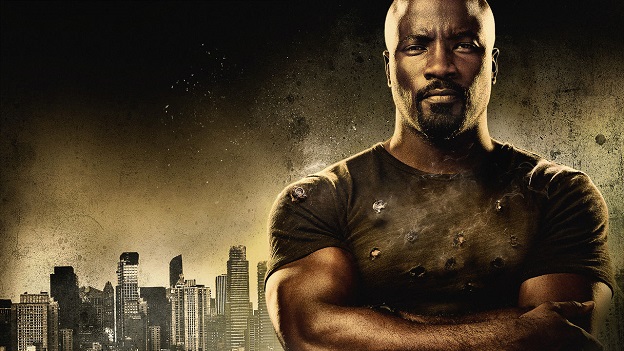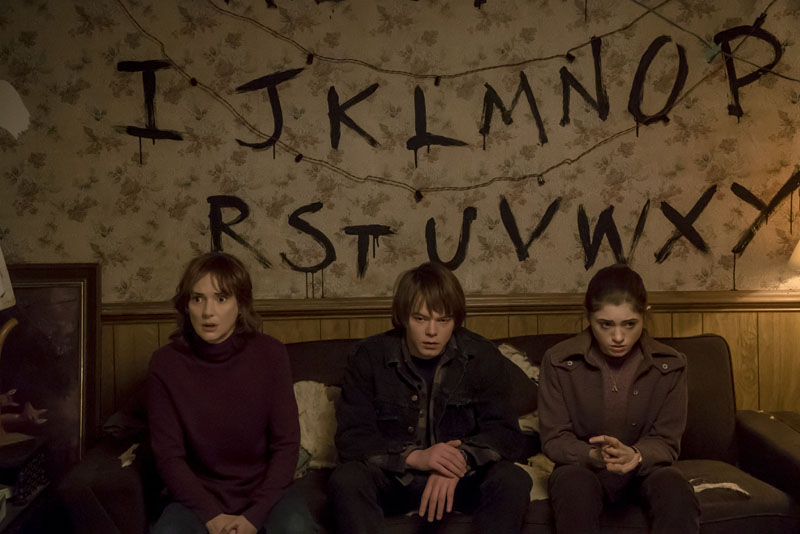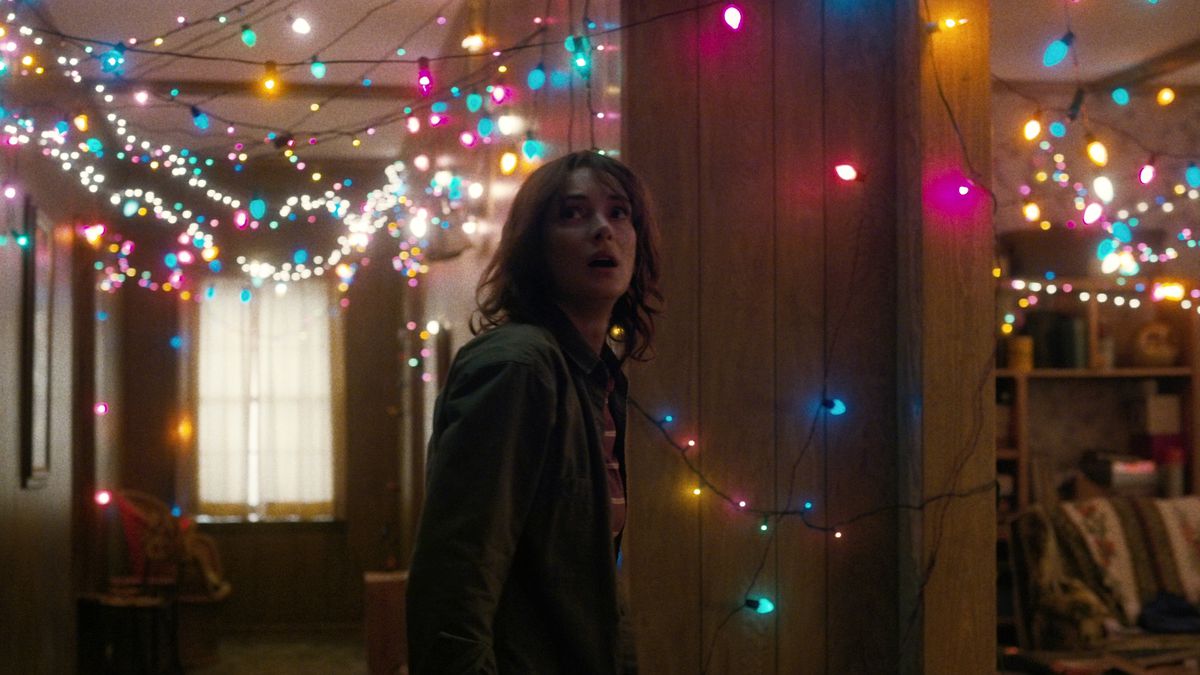This article was written by Rachel Jensen for Big Shiny Robot! You can find her on twitter @supermochella
“Orange is the New Black” Season 4 (10 out of 10) Created by Jenji Kohan; Starring Taylor Schilling, Danielle Brooks, Taryn Manning, Michael Harney, Lori Petty, Kate Mulgrew, Uzo Aduba, Dascha Polanco, Samira Wiley; Streaming June 17, 2016 on Netflix

Deep Breath. Season 4, wow. If you did not finish watching Season Four of OITNB, stop reading right now and get to that. You’ve had a whole week, that’s only about 13 hours of your time. By the time I reached the last four episodes I was on the hook, and I would lose sleep and sanity on a work night to finish the season. My love of Netflix is unbound for the fact that I can binge watch a new season in under a week, but that is a bittersweet love since I now have to wait an entire year to see this finale to play out. You have been warned, so prepare for huge spoilers ahead.
Season 3 finished up beautifully with the ladies escaping Litchfield Prison through a series of blunders that led them all to an idyllic afternoon at the lake and a taste of freedom. The original prison staff had walked out due to the corporate takeover of the facility and the loss of their benefits. A repair crew left a gap in the prison fence that the ladies could escape through to the lake. Chapman’s Aussie love (played by Ruby Rose) had just been shipped off to Max, leaving Piper feeling invincible. Everything looked like it was going well for everyone, except for Alex Vause, who was right all along about a hit man being sent to the prison to kill her; and remember that this is how the season is beginning. From there, strap in, get some comfy pants on, maybe come packing with Gatorade and snacks, because you aren’t moving from your couch for the next thirteen and a half hours.
Now we’re already starting with the spoilers. Yes, there will be some tears this season. You’ll want to cheer, laugh, bawl your eyes out, and probably punch your TV or streaming device. Lolly, Litchfield’s paranoid schizophrenic conspiracy theorist, goes to grab Alex during the exodus through the fence. Fortunately, she stumbles upon Alex nearly being murdered by the C.O. who was sent to kill her. Lolly to the rescue, stomps him to death. She just killed a guard to save Alex’s life in the most violent act, surprisingly, we’ve seen in a drama about women in prison. Because of the walkout and prisoner escape, this sets the stage for the perfect murder and cover up. Now we’re off to a bang. Soon, we’ll see Alex and Lolly, with the help of the prison murder-matron, dismember and bury him in the garden. That’s right, they kill a guy (well, Lolly just stunned him and Alex had to mercy kill him, which was really hard to watch), then they dismember him with garden tools, and plant the prison tomatoes over him.

Season 4 begins to weave in multiple social elements, specifically the issue of privatized prisons. The inmates are rounded up by Maximum’s riot guards, one of whom will stay and make Litchfield really unpleasant: Piscatella. The wrangled-up women return to the prison to meet with dozens of new inmates, because of the privatization the population of Litchfield has now nearly doubled. The new inmates are overwhelmingly Hispanic, with a large gang of Dominicans forming to fight for control over the prison, led by a hardened-up Maria. When Maria tries to corner the underground dirty panty market to flex her power, Piper flexes back by developing a gang task force. As adorably misguided as Piper always has been and always will be, she also inadvertently sets up a prison white power gang. To top that off, celebrity Judy King is now a prisoner at Litchfield, and will be given the royal treatment (ala Martha Stewart) to the chagrin and sometimes delight of the prisoners. OK, so we’ve got new inmates, racial tension, blatant inequality, a lack of regulation, and lack of resources. What could possibly go wrong?
Well, MCC for starters. I had to remind myself at least several times an episode ‘this is really what is happening, this is really this ridiculous’. From the slop we were introduced to in the cafeteria last season, real issues facing privatized prisons pop up at every corner. Overpopulation results in a sad, but funny, tampon shortage for one. Add to that the walkout of the guards, and how to bring in a new staff that is willing to be paid just slightly more than minimum wage with zero benefits. Our sometimes hero and sometimes failure, Joe Caputo, joins forces with the dim-witted, eager-beaver Linda from Purchasing, who reminds me of the know-it-all teacher’s pet that only gets A’s because she wears low-cut tops. I can’t mince words on how much I absolutely hated Linda. Caputo is a pretty decent guy, and I’m rooting for him the whole time to make the right decision, but Linda? I really want to see Linda get smacked down from her high horse with a hefty dose of reality. In a moment of weakness, Caputo pays Figueroa a visit, and I was actually happy to see her in the place of Linda.
Caputo is eager to suggest that Litchfield hire veterans who are already trained and disciplined. Linda agrees with him for absolutely all the wrong reasons that pin-point not only what is wrong with our system, but how society treats veterans as a whole. Somehow, Litchfield manages to hire a handful of sociopaths with conduct unbecoming of any soldier. The new guards harass and assault the inmates, play juvenile games, and drink on the job. This is the point where things take a very, very dark turn. New CO Humphrey ‘Humps’ is probably going to be the most hated character in the whole series, and there are a lot of hated characters to choose from. At first I thought he’d be another jovial guard like Luschek, but this guy makes Pornstache look like a friendly neighborhood babysitter. He is a sadist that mentally tortures inmates for his own pleasure. At one point, even forcing inmates to fight each other because he’s bored. This leads to the breakdown of several characters’ psyche, including Crazy Eyes. Anyone with a heart cannot possibly watch the rest of Crazy Eyes’ back story without having it break. To see her completely break down due to her fragile mental state being pushed to the limits by Humps is cruel. Sadly, this is the reality for many prisoners who never received the help they needed on the outside.
Speaking of mental health, you might think Crazy Eyes has been neglected by society, but we also get to know the back story of Lolly Whitehead and Sam Healy. Two characters in opposite roles in the prison, and a similar heart-wrenching tale of paranoid schizophrenia. Lolly has a psychotic break after killing Aydin, Kubra’s hit man. It’s not the killing that breaks her, it’s her paranoia about the drones in the garden. The drones are real, but her conspiracy theories are not. I, for one, am happy that they didn’t take the route of killing her character off, but watching what ultimately happens to Lolly had me in tears. She confesses to the killing, and no one believes her. Healy instead makes her his pet project, to somehow atone for not being able to help his own mother who had a similar mental illness. This explains Healy’s own backwards attitudes toward helping people and his thoughts on women in general. He’s unable to help her, and realizes that he’s made a terrible mistake when the body is recovered from the garden. Prepare yourself for a long stretch of sobbing at that point. Her confusion and betrayal of being hauled off to psych tore me to pieces.
But wait! It’s not just Lolly, Healy, and Crazy Eyes that are suffering. Sophia Burset has wasted away in the SHU, ahem, “protective custody”, since her assault in season three. Her wife is still trying to prove she’s in there to win a lawsuit to get her out. She might actually be the inmate in the worst shape after all is said and done, and that’s including Chapman’s swastika branding. Holy effing crap, OITNB. It’s like you’ve been setting up this powder keg all along and this is now the season that everything just blows up in front of us. If anything is made crystal clear, it is the line between the haves and the have-nots, Burcet being a huge example of how little the honest protection a trans woman is regarded in Litchfield.
At this point, everyone is fed up for their own reasons. The racial tension, the drug peddling, and the inequality and special treatment given to Judy King. No one is safe in prison, no one is allowed to be human any longer. One woman stands out as a defiant instigator, and it’s one of the women you’d least expect. Blanca, who has shown in her flashbacks, can only take so much before she revolts. It will be interesting to see what she actually did to earn her ticket into prison, because I don’t think that having an affair with the gardener to piss off the old lady you live with is a punitive offense. Her simple act of literally standing her ground somehow unites everyone, even the black girls, latinas, and skin-heads. When hard-ass Piscatella pushes Red just a little bit too far, the girls protest peacefully. Then, the whole powder keg makes another explosion. In the aftermath, the meekest guard somehow uses excessive force against the most passive and gentle inmate. I can’t even say her name in reference to what happens, I think I am still in shock and a certain degree of mourning. It’s legitimately hard to watch and take in. I think the impact for that scene is that it’s painfully real- we’ve been watching the news around the country, we know what’s really going on. If we didn’t already have empathy and have a face to a name with Sandra Bland or Freddie Gray, we do now with Poussey. It’s a shame that it takes a fictionalized character to really hammer home that feeling, but if you weren’t paying attention, this was not unintentional. It’s still one of the toughest moments in any show I’ve seen to watch a character as tough as Taystee crumple onto the ground crying next to her dead best friend. If you didn’t have to pause the show to cry again at this point, you have no heart.
Now what? Every character is tested this season. Every character has a chance to make a good decision, a bad decision, or the right decision. Caputo made a good decision to turn his back on MCC and not throw his only gentle-hearted CO under the bus, but in doing so he betrayed the women he swore to protect. As season four ends in a standoff at gun point, I just kept thinking, ‘how the hell did it come to this?’ I’m sure Caputo, MCC, and everyone watching Litchfield will be thinking the same thing when we catch back up to them in the continuation. Where season 1 ended with the beat down to end all beat downs between Chapman and Pennsatucky, season 2 ended with the escape of terminally-ill Miss Rosa, and season 3 ended in smiles at the lake- season 4 offers no answers, no resolution, and no closure.
Season four is some of the most intense viewing I have ever binged watched. The last four episodes is akin to the OITNB version of the Red Wedding. There is so much going on that if you blink, you’ll miss it. Your heart will break over and over again for Lolly, Healy, and Crazy Eyes for their depiction of mental illness. You will watch Ramos break her flirty minx persona and finally crack under pressure, then literally have to deal with the aftermath of a sociopath who made her eat a live mouse at gun point. The elements of rape and surviving sexual assault are on brutal display with Pennsatucky, Charlie, and Big Boo. Nicky and Red do the dance of dependency and co-dependency when Nicky breaks her sobriety yet again, (however, three lesbians smoking crack in a tiny cornfield was definitely one of the funniest scenes of the season). Race relations, equality, and real raw humanity permeate everything in the season. The love and redemption between SoSo and Poussey is remarkable, which only makes the ending even more depressing. So when that last episode is finished, and you’re done cheering, screaming, and crying, take a deep breath, don’t forget to start blinking again, and join the rest of us in the long wait until season five. It’s going to be a hard year waiting for the next one, and I applaud everyone involved in creating OITNB for making one of the best damn seasons of the best damn show, ever.







